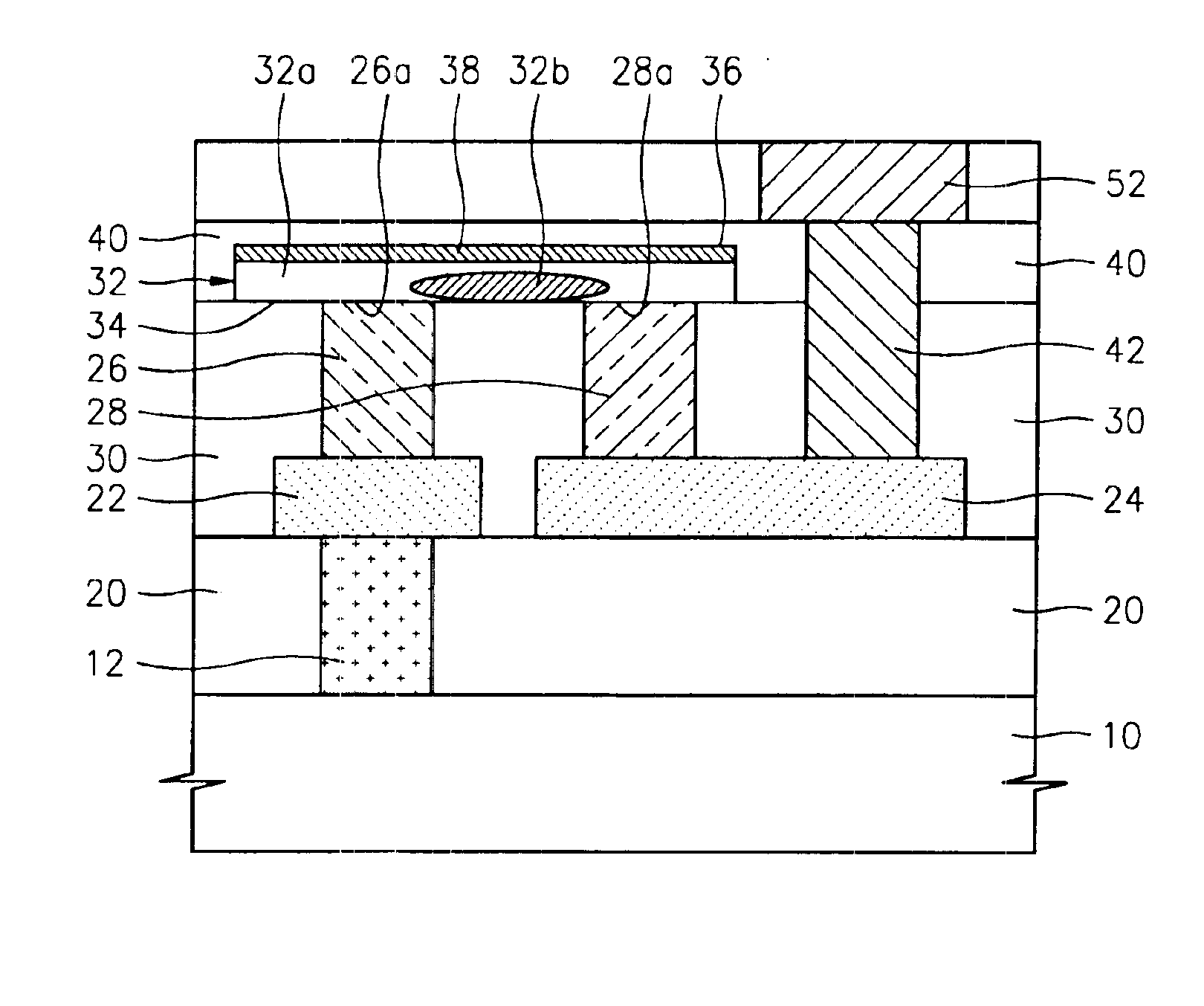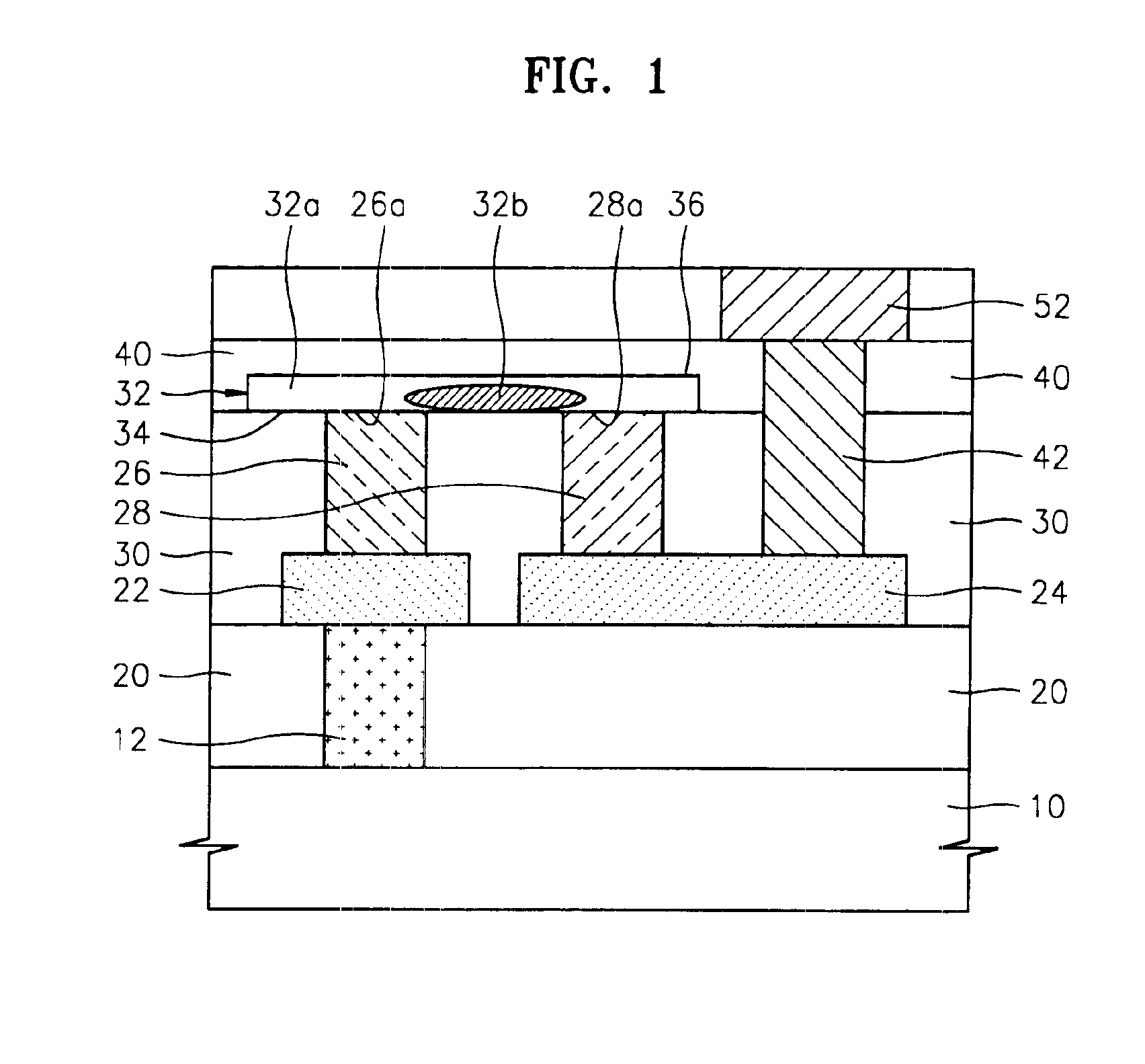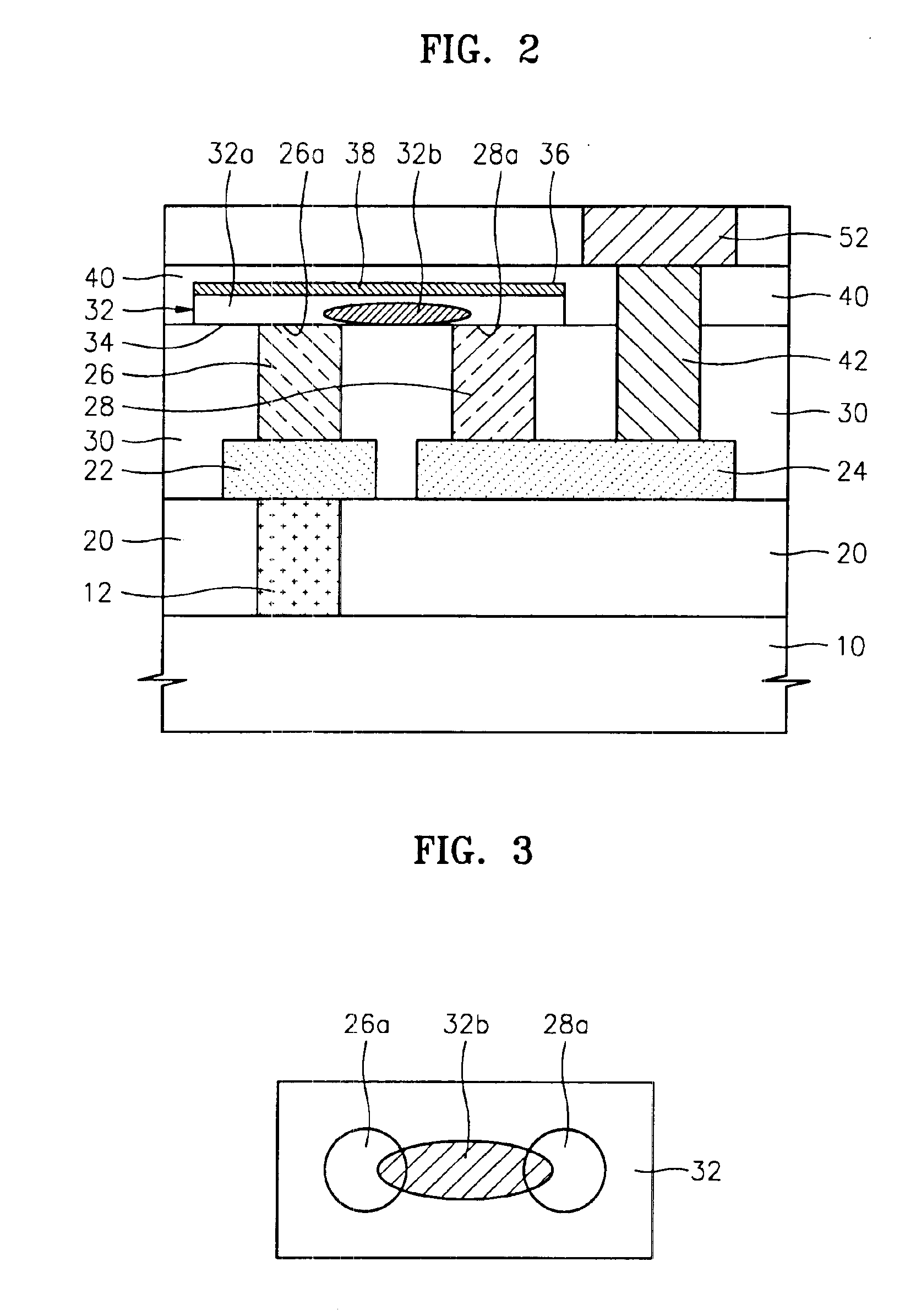Phase-change memory devices with a self-heater structure
a memory device and self-heating technology, applied in the direction of digital storage, semiconductor/solid-state device details, digital storage, etc., can solve the problems of joule heating, affecting reliability, and affecting reliability,
- Summary
- Abstract
- Description
- Claims
- Application Information
AI Technical Summary
Benefits of technology
Problems solved by technology
Method used
Image
Examples
Embodiment Construction
[0026]The present invention will now be described more fully with reference to the accompanying drawings, in which preferred embodiments of the invention are shown. This invention may, however, be embodied in different forms and should not be construed as being limited to the embodiments set forth herein. Rather, these embodiments are provided so that this disclosure will be thorough and complete, and will fully convey the scope of the invention to those skilled in the art. In the drawings, the size or thickness of layers and regions are exaggerated for clarity. Like numbers refer to like elements. As used herein the term “and / or” includes any and all combinations of one or more of the associated listed items.
[0027]It will be understood that although the terms first and second may be used herein to describe various regions, layers, and / or sections, these regions, layers, and / or sections should not be limited by these terms. These terms are only used to distinguish one region, layer,...
PUM
 Login to View More
Login to View More Abstract
Description
Claims
Application Information
 Login to View More
Login to View More - R&D
- Intellectual Property
- Life Sciences
- Materials
- Tech Scout
- Unparalleled Data Quality
- Higher Quality Content
- 60% Fewer Hallucinations
Browse by: Latest US Patents, China's latest patents, Technical Efficacy Thesaurus, Application Domain, Technology Topic, Popular Technical Reports.
© 2025 PatSnap. All rights reserved.Legal|Privacy policy|Modern Slavery Act Transparency Statement|Sitemap|About US| Contact US: help@patsnap.com



